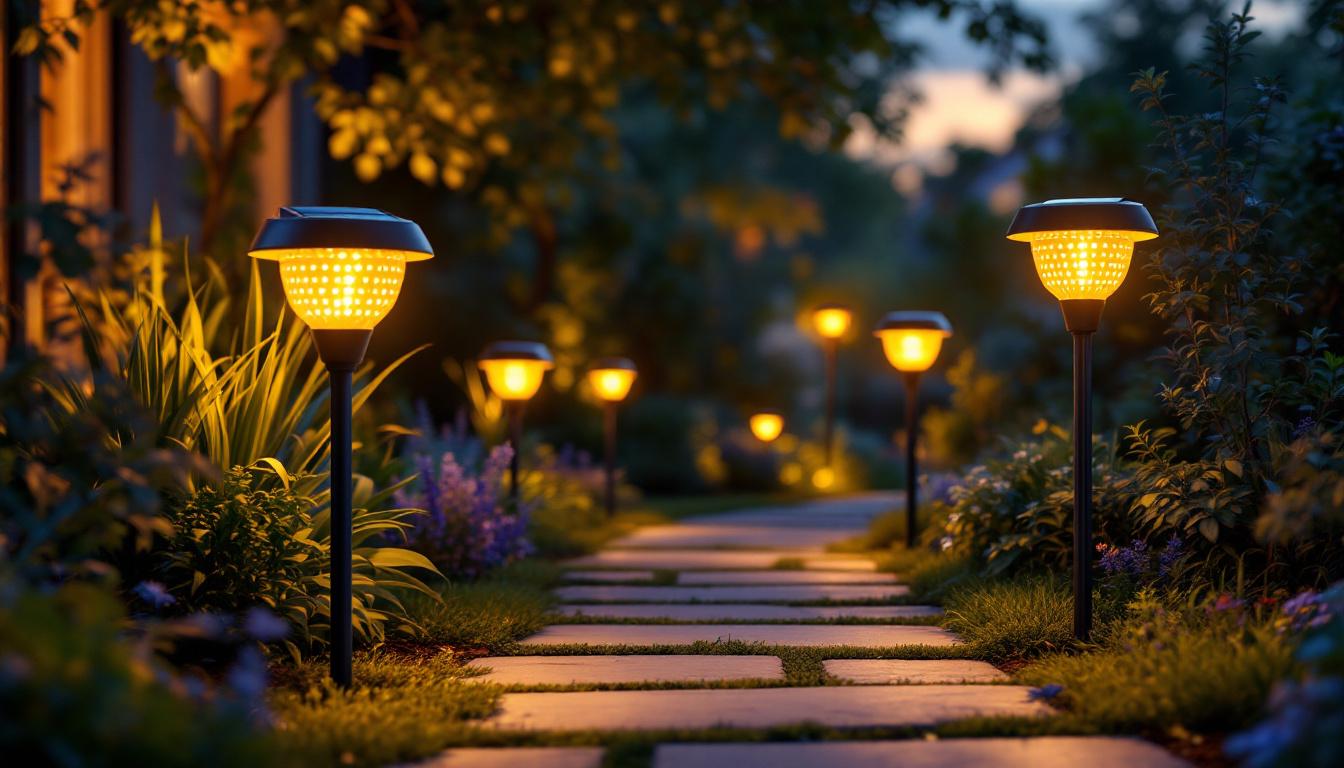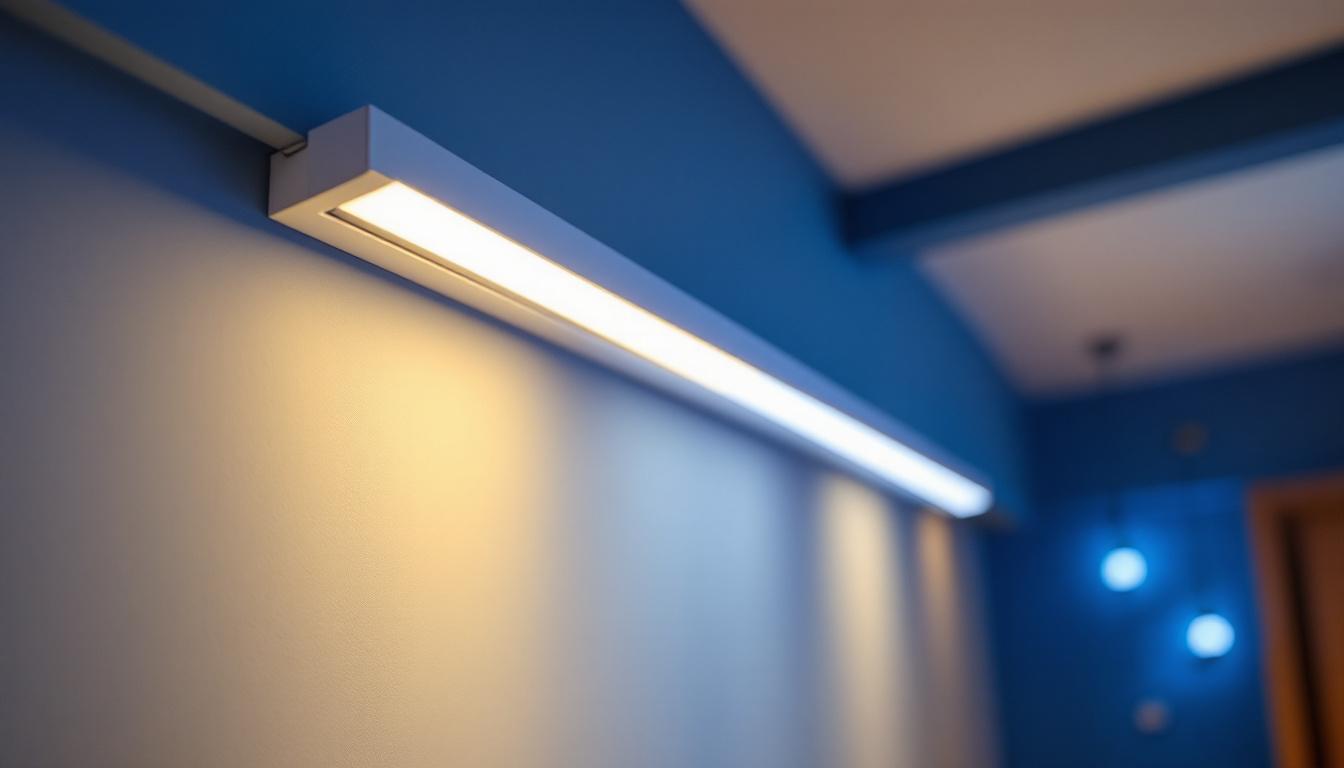
As the demand for sustainable and energy-efficient lighting solutions continues to rise, solar powered stick lights have emerged as a popular choice among lighting professionals. These versatile fixtures not only provide illumination but also contribute to environmental conservation by utilizing renewable energy. For lighting contractors looking to integrate solar powered stick lights into their projects, having a comprehensive checklist is essential. This article outlines key considerations, features, and installation tips to ensure successful implementation.
Solar powered stick lights are outdoor lighting fixtures that harness solar energy to power LED bulbs. They are typically installed in gardens, pathways, and driveways, providing both functional and aesthetic benefits. Understanding how these lights operate, their advantages, and their limitations is crucial for lighting professionals.
At the core of solar powered stick lights is a photovoltaic cell that converts sunlight into electricity. During the day, these cells absorb sunlight and store energy in rechargeable batteries. When dusk falls, the lights automatically turn on, using the stored energy to illuminate the area. Many models also feature sensors that adjust brightness based on ambient light levels, optimizing energy consumption. This means that on particularly bright days, the lights can store more energy, allowing them to shine brighter or for longer periods during the night.
One of the primary benefits of solar powered stick lights is their eco-friendliness. By utilizing renewable energy, they help reduce carbon footprints and lower electricity costs. Additionally, these lights are often easy to install, requiring no wiring or electrical work. This makes them a cost-effective solution for both residential and commercial projects. Moreover, they can be strategically placed to enhance safety and security in outdoor areas, illuminating dark corners and deterring potential intruders.
Another advantage is their versatility. Available in various styles and designs, solar powered stick lights can complement different outdoor aesthetics, from modern landscapes to rustic gardens. Furthermore, many models are designed to withstand various weather conditions, ensuring durability and longevity. Some advanced models even come equipped with motion sensors, which can further enhance their functionality by providing light only when movement is detected, thereby conserving energy and extending battery life.
While solar powered stick lights offer numerous benefits, they also come with certain limitations. Their performance is heavily reliant on sunlight exposure; areas with limited sun may experience reduced brightness or shorter operational hours. Additionally, the quality of materials and technology can vary, impacting the overall effectiveness and lifespan of the lights. For instance, cheaper models may use lower-quality batteries that degrade faster, leading to a shorter lifespan and less reliable performance.
Another consideration is the initial cost. While prices have decreased over time, high-quality solar powered stick lights may still require a larger upfront investment compared to traditional lighting options. However, this cost is often offset by long-term savings on energy bills. It’s also worth noting that many solar lights come with warranties that can provide peace of mind, ensuring that you are covered in case of any manufacturing defects or performance issues. As technology continues to advance, we can expect even more efficient and affordable solar lighting solutions in the future, making them an increasingly attractive option for outdoor illumination.
When selecting solar powered stick lights, lighting professionals should consider several key features to ensure optimal performance and satisfaction. These features can significantly impact the effectiveness and longevity of the lights, making them crucial to the decision-making process.
The brightness of solar powered stick lights is measured in lumens. For pathways and outdoor spaces, a minimum of 100 lumens is typically recommended to provide adequate illumination. However, for larger areas or security purposes, lights with higher lumen outputs may be necessary. It’s essential to assess the specific lighting needs of the project to choose the appropriate brightness level.
The battery capacity directly influences how long the lights can operate after sunset. Look for models with high-capacity batteries, typically lithium-ion or nickel-metal hydride, as they tend to offer better performance and longer lifespans. Additionally, consider the charging time; efficient models should fully charge within 6-8 hours of sunlight exposure.
Given that solar powered stick lights are often exposed to outdoor elements, durability is a critical feature. Look for lights constructed from high-quality materials, such as stainless steel or durable plastics, that can withstand harsh weather conditions. Furthermore, check for an IP (Ingress Protection) rating, which indicates the level of protection against dust and water. An IP65 rating or higher is generally recommended for outdoor use.
Proper installation is vital to the performance of solar powered stick lights. Following best practices can enhance functionality and ensure longevity. Here are some essential guidelines for lighting professionals to consider during installation.
One of the most critical aspects of installing solar powered stick lights is selecting the right location. Ideally, the lights should be placed in areas that receive direct sunlight for most of the day. Avoid shaded spots caused by trees, buildings, or other obstructions that can hinder sunlight exposure. Additionally, consider the intended use of the lights; for pathways, ensure they are positioned to provide adequate visibility without causing tripping hazards.
The height at which solar powered stick lights are installed can significantly impact their effectiveness. Generally, a height of 24 to 36 inches is recommended for optimal light distribution. Spacing between lights should also be taken into account; for pathways, spacing them 6 to 8 feet apart is typically sufficient. However, this may vary based on the brightness of the lights and the specific lighting requirements of the area.
To ensure the longevity and efficiency of solar powered stick lights, regular maintenance is essential. This includes cleaning the solar panels periodically to remove dirt and debris that can block sunlight. Additionally, checking the batteries and replacing them as needed will help maintain optimal performance. Lighting professionals should also inspect the fixtures for any signs of damage or wear and address these issues promptly to avoid further complications.
Understanding the cost implications of solar powered stick lights is crucial for lighting professionals and their clients. While the initial investment may be higher than traditional lighting options, the long-term savings and benefits can make them a worthwhile choice.
The initial cost of solar powered stick lights can vary significantly based on factors such as brand, quality, and features. While some budget-friendly options are available, investing in higher-quality models often results in better performance and durability. It’s essential to communicate to clients that while the upfront cost may be higher, the savings on electricity bills and reduced maintenance costs over time can offset this expense.
Calculating the return on investment for solar powered stick lights involves considering both tangible and intangible benefits. Tangible benefits include reduced energy costs and lower maintenance expenses, while intangible benefits encompass environmental impact and enhanced property aesthetics. By presenting a comprehensive ROI analysis to clients, lighting professionals can help them understand the long-term value of their investment.
For clients concerned about the initial investment, exploring financing options can be beneficial. Many companies offer financing plans or incentives for energy-efficient upgrades, making it easier for clients to invest in solar powered stick lights. Additionally, some regions provide tax credits or rebates for renewable energy installations, further reducing the overall cost.
The field of solar powered lighting is continually evolving, with new technologies and trends emerging regularly. Staying informed about these developments can help lighting professionals remain competitive and offer the best solutions to their clients.
Recent advancements in solar technology have led to more efficient photovoltaic cells and improved battery performance. These innovations result in brighter lights with longer operational times, making solar powered stick lights more effective than ever. As technology continues to advance, lighting professionals can expect even greater efficiency and reliability from solar powered solutions.
As smart home technology becomes increasingly popular, integrating solar powered stick lights with smart systems is a growing trend. This allows users to control their outdoor lighting remotely, set schedules, and even adjust brightness levels based on their preferences. Lighting professionals should consider offering smart solar lighting options to meet the evolving needs of their clients.
With the growing emphasis on outdoor living spaces, the design of solar powered stick lights is becoming more sophisticated. Manufacturers are creating stylish fixtures that blend seamlessly with various landscape designs, enhancing the overall aesthetic appeal of outdoor areas. Lighting professionals should stay updated on the latest design trends to provide clients with options that complement their outdoor spaces.
Solar powered stick lights represent a significant advancement in outdoor lighting technology, offering sustainable and efficient solutions for various applications. For lighting professionals, understanding the intricacies of these fixtures, from their operation to installation and maintenance, is essential for successful project execution. By utilizing the checklist outlined in this article, contractors can confidently integrate solar powered stick lights into their offerings, ensuring they meet the needs of their clients while contributing to a greener future.
As the market for solar powered lighting continues to grow, staying informed about advancements and trends will empower lighting professionals to make informed decisions that enhance their service offerings. Embracing this innovative technology not only benefits clients but also positions contractors as leaders in the sustainable lighting movement.
Ready to elevate your lighting projects with the efficiency and sustainability of solar powered stick lights? At LumenWholesale, we provide lighting professionals like you with spec-grade lighting solutions that meet the highest industry standards. Our commitment to quality, combined with unbeatable wholesale prices, ensures that you can light up your projects without breaking the bank. Say goodbye to middlemen and inflated markups, and hello to hassle-free bulk buying with free shipping. Don’t compromise on quality or value—choose LumenWholesale for your lighting needs and make every project shine. Discover our extensive selection and experience the best in wholesale lighting by visiting Wholesale Lighting at the Best Value today.

Discover the essential facts about hanging dining lights from expert lighting contractors.

Discover why plug outlet stock is essential for every lighting contractor.

Discover the transformative advantages of HID lighting for contractors.

Discover how LED strip tracks are revolutionizing the lighting industry by offering simplicity and efficiency for contractors.